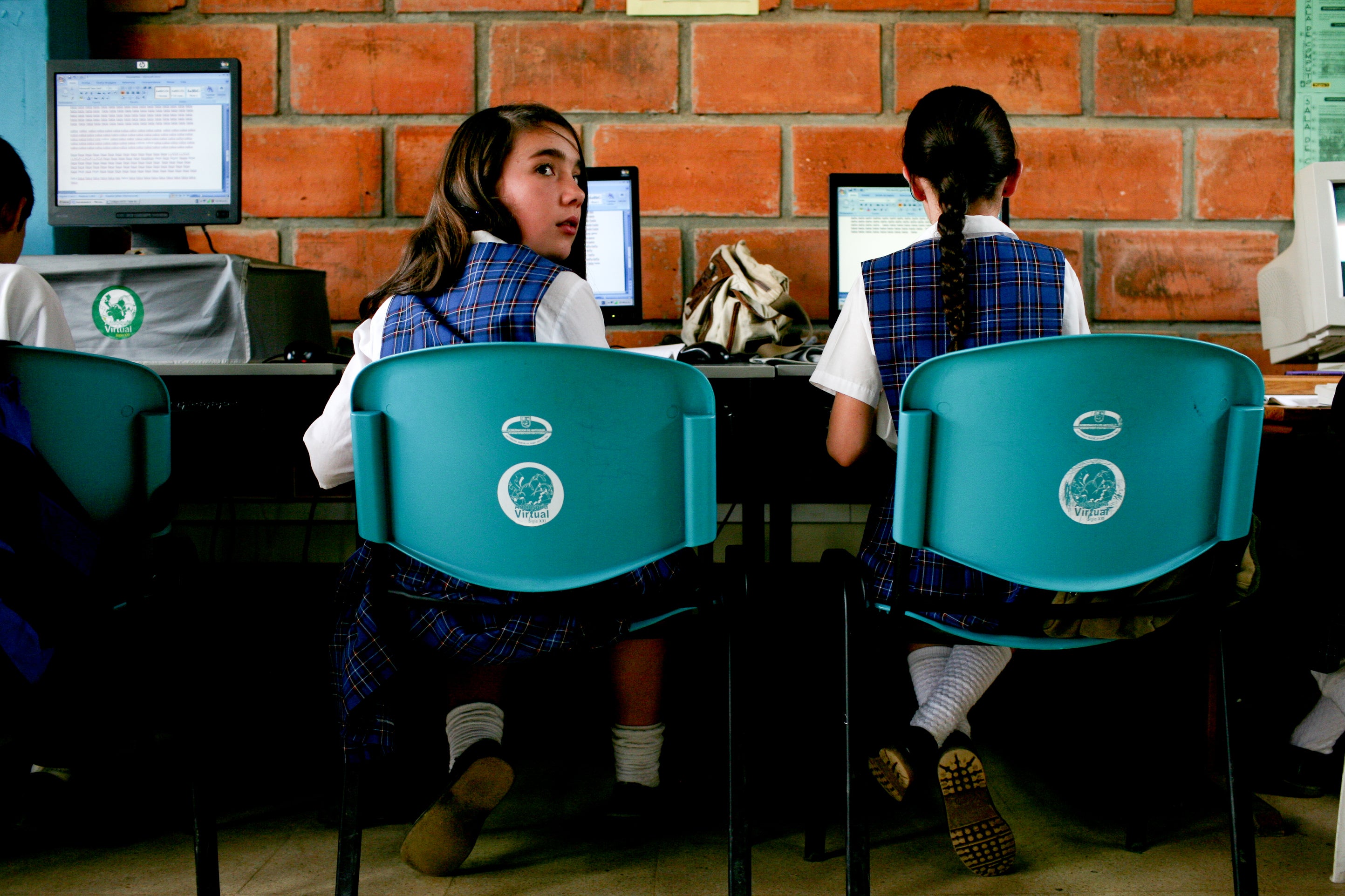
Photo: Charlotte Kesl / World Bank
There is no denying that governments around the world are expanding investments in education technology, from inputs that students use directly (like Kenya’s project to put tablets in schools) to digital resources to improve the education system (like Rio de Janeiro’s school management system). As public and private school systems continue to integrate technology into their classrooms, remember that education technology comes with risks.
Michael Trucano, my colleague and the World Bank's resident expert on education technology, highlighted four caveats during a wide-ranging conversation with Stephen Ladek on the Terms of Reference podcast.
Education technology has the tendency to exacerbate inequality.
"One of the things that gets a lot of play, certainly here in the U.S., is the Khan Academy which is this, initially, a series of free videos on YouTube that are small tutorials about the Pythagorean theorem or basic algebra concepts. Putting those online, we've seen that for students who are self-starters and good learners and who are highly motivated, that can be a tool that they use to really help their learning and to move them forward....That's interesting. It points to a fundamental challenge of a lot of these innovations: that they tend to help those who already have various advantages because those people are able to take advantage of them more quickly for a variety of reasons. While introducing innovation this is a challenge we face and I think everyone faces: The rising tide may raise all boats but it doesn't raise them equally and it doesn't raise them at the same speed." [~22:35 in the podcast; emphasis added, transcript edited for clarity]
But this inequality is not inevitable, as Trucano lays out with the example of a Uruguay’s Plan Ceibal education technology program.
Dumb failure is common in education technology.
"There is a lot of failure in this area. There are two types of failure: There's good failure and there's dumb failure. The dumb failure we see over and over again is just dumping technology into schools and hoping for magic to happen; not having a plan, thinking that things will happen automatically because kids are “digital natives,” a term that obscures as much as it illuminates; thinking that just because technology is there your problem is solved." [~31:50 in the podcast; emphasis added, transcript edited for clarity]
You can read more on this in Trucano's post, "Worst practice in ICT use in education."
Technology makes teachers more central rather than marginalizing them.
"Another classic mistake that is made over and over again is this belief—and I hear this unfortunately from Ministers of Education in many places: They say, you know, we have problems with our teachers, we have problems with our teacher union. If only technology could replace teachers, I'd get rid of these problems and I'd be able to manage it. And you know, nowhere in the world do we see technology replacing teachers. It changes some of what teachers do. It changes some of their responsibilities, but nowhere do we see it replacing teachers. Instead, it makes their role more central." [~32:20 in the podcast; emphasis added; transcript edited for clarity.]
This is consistent with a recent review of learning interventions, by Snilstveit et al., which found that “Programs where computer-assisted learning substituted for other lessons were more likely to produce negative outcomes.”
Education technology is not an end in itself.
"Tech in some ways in schools is a no-brainer but that's neither here nor there, because it's what you do with it. If technology is the answer, what's the question? So where it's assumed this is the answer, the question is different in different places. It should be about what these tools are meant to be used for or what challenges they are meant to 'solve.'" [~36:11 in the podcast; emphasis added; transcript edited for clarity]
School systems around the world are leaping (or have already leapt) into major technological innovations, and this can be great. But look before you leap—and remember these four cautionary lessons.
Bonus reading:
- Here's a recent example of an innovation with strong learning impacts from India, with a review of learning impacts of technology innovations in Appendix B, by Muralidharan, Singh, and Ganimian.
- This review demonstrates visually the wide variation in learning impacts resulting from technological interventions, in Figure Three -- from highly positive to no impact and even significantly negative, by McEwan.
- Trucano writes about these issues extensively on his blog, EduTech.


Join the Conversation